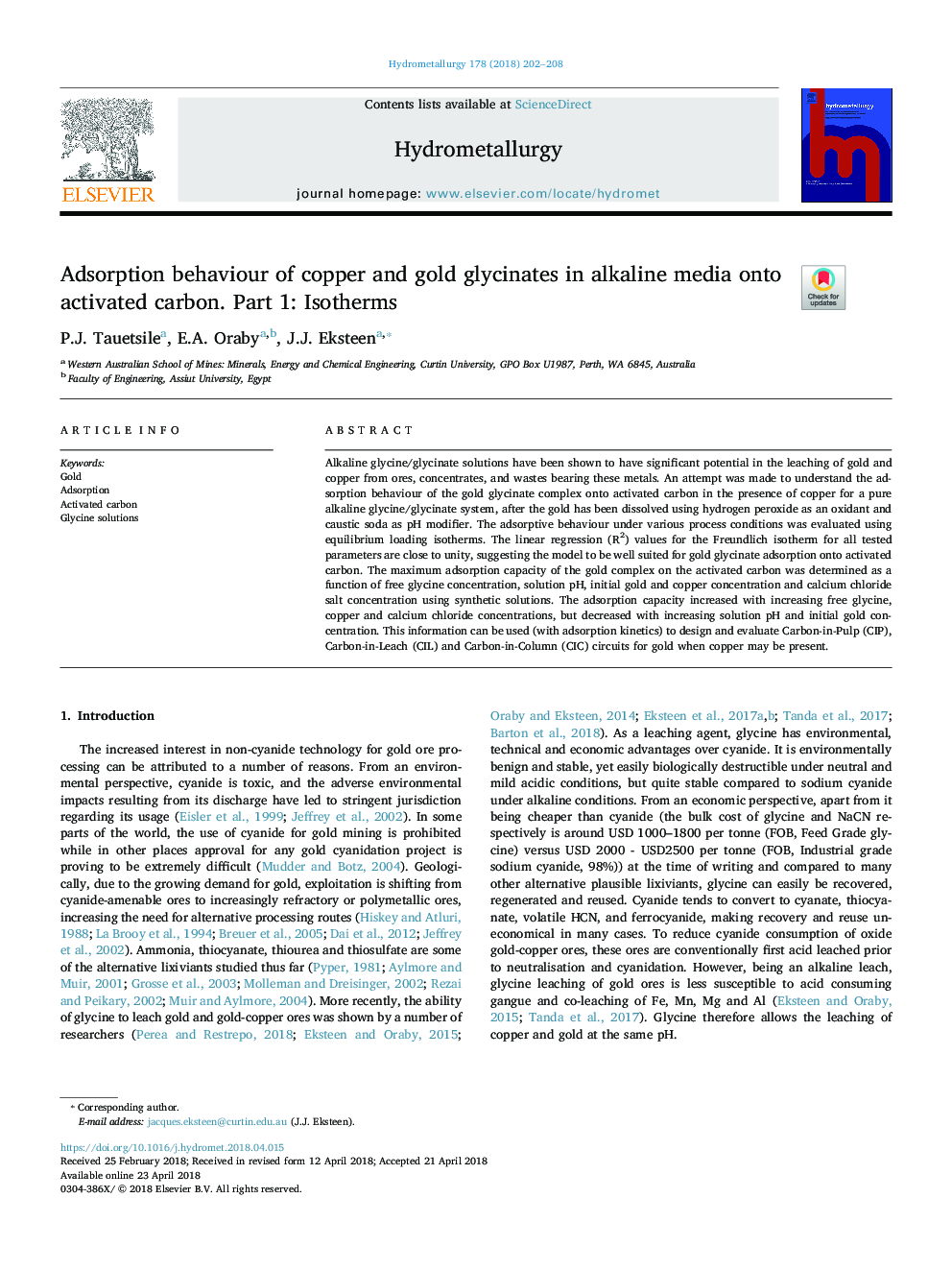| Article ID | Journal | Published Year | Pages | File Type |
|---|---|---|---|---|
| 6658923 | Hydrometallurgy | 2018 | 7 Pages |
Abstract
Alkaline glycine/glycinate solutions have been shown to have significant potential in the leaching of gold and copper from ores, concentrates, and wastes bearing these metals. An attempt was made to understand the adsorption behaviour of the gold glycinate complex onto activated carbon in the presence of copper for a pure alkaline glycine/glycinate system, after the gold has been dissolved using hydrogen peroxide as an oxidant and caustic soda as pH modifier. The adsorptive behaviour under various process conditions was evaluated using equilibrium loading isotherms. The linear regression (R2) values for the Freundlich isotherm for all tested parameters are close to unity, suggesting the model to be well suited for gold glycinate adsorption onto activated carbon. The maximum adsorption capacity of the gold complex on the activated carbon was determined as a function of free glycine concentration, solution pH, initial gold and copper concentration and calcium chloride salt concentration using synthetic solutions. The adsorption capacity increased with increasing free glycine, copper and calcium chloride concentrations, but decreased with increasing solution pH and initial gold concentration. This information can be used (with adsorption kinetics) to design and evaluate Carbon-in-Pulp (CIP), Carbon-in-Leach (CIL) and Carbon-in-Column (CIC) circuits for gold when copper may be present.
Keywords
Related Topics
Physical Sciences and Engineering
Chemical Engineering
Chemical Engineering (General)
Authors
P.J. Tauetsile, E.A. Oraby, J.J. Eksteen,
